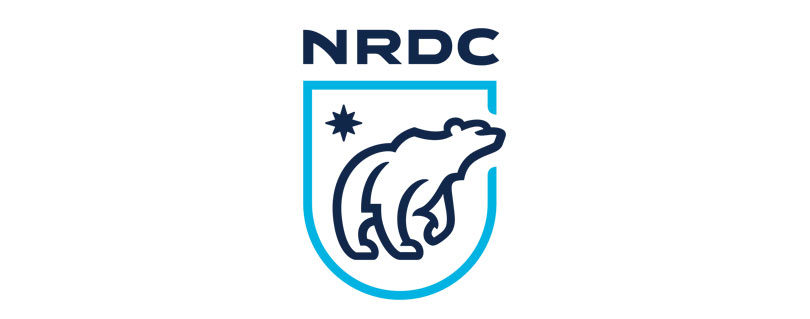World’s Most Effective Environmental Treaty Turns Thirty
Published by the Natural Resources Defense Fund
This post co-authored by Alex Hillbrand.
This is a big year for the Montreal Protocol – the 30th anniversary of the world’s most successful environmental protection agreement.
Every country on earth is a party to this treaty, which has prevented catastrophic destruction of the ozone layer that protects us from the sun’s dangerous ultraviolet radiation. Phasing out ozone-destroying chemicals has also provided a huge climate protection side-benefit, because many of those chemicals are also powerful heat-trapping agents. Countries took climate protection a step farther by adopting the Kigali Amendment to phase down hydrofluorocarbons (HFCs) in October 2016.

The ozone hole is starting to heal
Source: NASA
Representatives of the parties, industry, and nongovernmental organizations are gathered this week in Bangkok. Topping the agenda are steps to complete the accelerated phase-out of the last generation of ozone-depleting chemicals – the hydrochlorofluorocarbons (HCFCs) – agreed in 2007, by negotiating the next three year “replenishment” of funding to assist developing countries in meeting their reduction commitments. Countries are also discussing the role of the Montreal Protocol in supporting energy efficiency improvements as a co-benefit of transitioning to environmentally friendly refrigerants in air conditioners and refrigeration.
The funding branch of the Montreal Protocol, the Multilateral Fund (MLF), covers the agreed incremental costs that developing countries incur to meet their obligations under the Protocol. Every three years, countries agree to replenish the MLF to support country programs to help convert from old to new substances and from old to new product designs. This week, negotiations will begin for the period 2018-2020, ultimately leading to an agreed replenishment level at the Meeting of the Parties in November 2017.
The bulk of the MLF’s activity in the next three-year period will focus on the phase-out of HCFCs. It will also include funding for countries to avoid transitioning to HFCs with high climate-warming power (global warming potential or GWP) by leapfrogging straight from ozone-depleting chemicals to low-GWP alternatives. This will help avoid the buildup of HFC-using equipment that must later be replaced . Funding over the next three years will also include money for important preliminary HFC-related activities. Eligible HFC-specific initial activities have been under discussion since last October and were recently agreed by the MLF’s governing Executive Committee (ExCom).
Last week, the ExCom agreed that the MLF will fund a list of initial “enabling activities” (i.e., activities that precede preparation of national implementation plans) to support the phasedown of HFCs, including supporting country actions for early Kigali Amendment ratification, work on institutional arrangements and licensing systems, data reporting on HFC production and consumption, and more.
In addition, the committee agreed to fund a limited number of HFC phase-down investment projects not tied to any country plan to phase down HFCs. These pilot-type projects will help the MLF determine typical costs for HFC conversions, and will aid ExCom as it writes guidelines for how much funding should be made available for HFC phase-down activities. These projects will offer leadership companies in developing countries a great opportunity to start phasing down HFCs early, with financial support from the Protocol.
Countries also requested a study on the most cost-effective ways to destroy HFC-23, a super-potent by-product of HCFC-22 production, with a GWP 14,800 times that of carbon dioxide. The first major commitment of developing countries under the Kigali Amendment is mandatory destruction of HFC-23 starting January 1, 2020. Better understating the costs will help the MLF allocate funds for the required destruction. Key issues surrounding funding eligibility, however, will not be addressed by this study.
While the vast majority of the funding for the 2018-2020 replenishment will be devoted to the HCFC phase-out, these three ExCom decisions begin to build the framework for implementing the Kigali Amendment and will guide parties to provide additional funding for preliminary HFC-related activities. The Technology and Economic Assessment Panel (TEAP), which advises the parties on the replenishment, will now be able to add HFC-related activities to its replenishment report, which provides advice to the parties on funding.
The TEAP’s final report will be done in advance of the Meeting of the Parties in November 2017, at which the total funding for the replenishment will be agreed. A robust funding package for the 2018-2020 replenishment will help developing countries complete the HCFC phase-out and start the HFC phase-down ahead of schedule. To fulfill the promise of the Kigali Amendment, it will be important for funding countries to provide ample support to allow countries to leapfrog HFCs whenever possible and, in addition, to begin setting the stage for the full phasedown of HFCs in the years to come.
We’ll report on the outcome of the meeting at the end of the week.
Read the full article at: https://www.nrdc.org/experts/david-doniger/worlds-most-effective-environmental-treaty-turns-thirty



